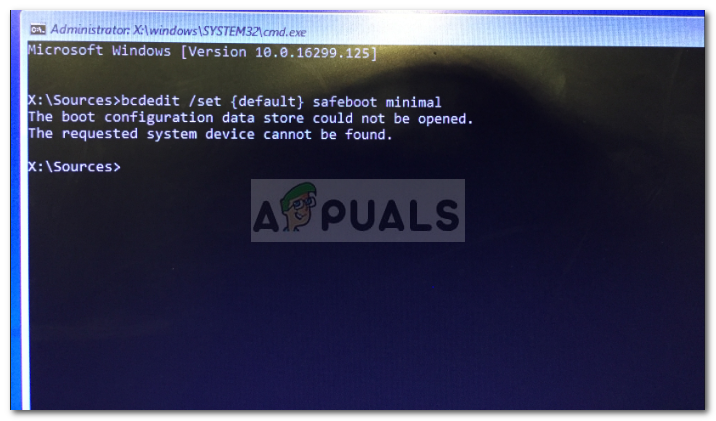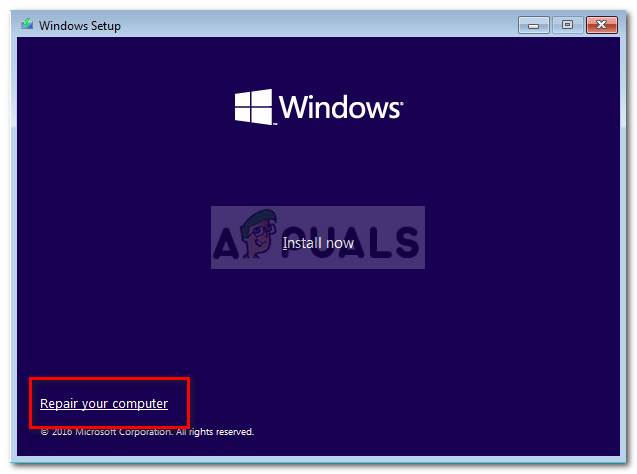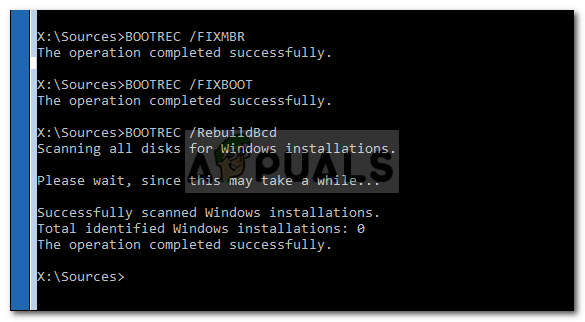Fix: The Requested System Device Cannot be Found
The ‘The Requested System Device Cannot be Found’ error is usually caused due to plugging USB in the wrong USB slot etc. due to which users aren’t able to repair their system. When Windows cannot boot up properly and users try to repair the Master Boot Record (MBR) using the command prompt with a Windows installation media, they are, rarely, presented with the said error. The reason due to which Windows isn’t able to boot up is the corruption or damage of the BCD file.
At such times, you would naturally refer to recovering the system using an installation media. The recovery is not easy and is, at times, packed with errors that will prevent you from doing so. The said issue can be taken as an example. Before we get to the remedy of the said error, a look at the causes is necessary.

What causes the ‘The Requested System Device Cannot be Found’ Error?
Well, the error doesn’t occur often but when it does, it is usually due to the following factors —
- USB plugged in the wrong USB slot. If the USB containing the installation media is connected to a slot that is supported by your BIOS but the Windows Repair Environment doesn’t approve of it, it will cause the error.
- Installation media not finding the correct volume. Booting from a UEFI Windows installation media drive can cause the error as it won’t be able to find the system volume on the hard disk.
- Converting system to GPT. If you convert MBR to GPT without changing the boot option from MBR/BIOS to UEFI, it can cause the error to pop up.
You can use the following solutions to fix your issue.
Solution 1: Repair Using DVD/CD as Installation Media
If you have been using a USB as an installation media, switching to a DVD or CD might just fix the error for you. Sometimes, the Windows Preinstallation Environment cannot detect the USB drive due to which the error is occurring. Hence, you will have to opt for a DVD or CD. Here’s how to do it:
- Get a DVD or CD and create a Windows installation media on it using Media Creation Tool.
- Boot from the respective drive and click ‘Repair your computer’.

Repair Windows - Switch to Troubleshoot > Advanced Options and then finally open up a Command Prompt.
- Type these commands one-by-one:
bootrec /fixmbr
bootrec /fixboot
bootrec /rebuildbcd

Rebuilding Windows BCD File - Once the process has finished, restart your machine and check if your system loads up.
Solution 2: Setting the Correct Volume in the Command Prompt
If you are using a USB as an installation media, you can solve the error by setting the correct volume. In some cases, your USB cannot find the correct system volume which causes the error to show up. Therefore, use the following method to set the correct partition:
- Boot from a UEFI Windows Installation Media and open up a Command Prompt as mentioned above.
- Open up DiskPart utility by typing in diskpart.
- Type in ‘list disk’ to list all the partitions.
- From the listed partitions, locate the EFI partition (formatted as FAT32 type and will have a star under Gpt).

Locating the EFI Partition - Once you’ve found the EFI partition, select the partition by typing ‘select volume X’. Note that X is the volume number so make sure to replace it with the EFI partition number.
- Now, type in ‘assign letter=y’. This will assign a letter to the EFI partition. You can freely change the alphabet ‘y’ to anything you like.
- Type ‘exit‘ to close the diskpart utility.
- Afterward, type in the following commands in the Command Prompt:
cd /d y:\EFI\Microsoft\Boot\
bootrec /fixboot
- If you’ve assigned a different letter than ‘y’, please make sure to replace it in the above command.
- Then, enter the following command which will rename the BCD file to BCD.bak.
ren BCD BCD.bak
- Finally, enter the following command:
bcdboot c:\Windows /l en-us /s y: /f ALL
- Change the letter y here as well if you have assigned a different letter.
- Type in ‘exit‘ to close the command prompt.
- Unplug the installation media drive.
- Restart your system to see if this has fixed your issue.
Solution 3: Reinstalling Windows
If the above-mentioned solutions don’t work out for you, you are left with only one option i.e to reinstall Windows. It might be troublesome but there is no other way through which you can resolve this issue. Therefore, reinstalling Windows is your last resort if you want to use your system again.





